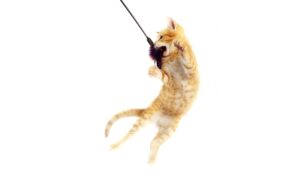Pet Business Report: 2022 U.S. Pet Supplies Spending Drops $1.86B
By Pet Age Staff//October 10, 2023//
Pet Business Report: 2022 U.S. Pet Supplies Spending Drops $1.86B
By: Pet Age Staff//October 10, 2023//
According to John Gibbons, the Pet Business Professor, total pet spending grew to $102.71 billion in 2022, up $2.73 billion (+2.7 percent) from 2021. After a record $8.75 billion (+57 percent) increase in 2021 the supplies segment fell $1.86 billion, (-7.8 percent) to $21.94 billion in 2022. (Note: All numbers in this report come from or are calculated by using data from the U.S. BLS Consumer Expenditure Surveys)
Supplies Spending fell -$4.6 billion 2018>2020 due to Tarifflation and the Pandemic. In 2021, pet parents caught up with their needs. Spending turned up in the first half then skyrocketed in the second half. In 2022, it plateaued in the first half then fell sharply in the second half. In this report, Gibbons will drill down into the data to determine what and who was behind the drop in spending.
In 2022, the average household spent $163.64 on supplies, down 8.2 percent from $178.20 in 2021. (Note: A 2022 Pet CU (68 percent) Spent $240.65) This doesn’t exactly match the -7.8 percent total spending decrease. Here are the specific details:
- 0.4 percent more CUs.
- Spent 10.0 percent less money.
- 2.1 percent more often.
Let’s start with a visual overview. The chart below shows recent Supplies spending history.
Since the great recession, spending in the Supplies segment has been driven by price. Although many supplies are needed by pet parents, when they are bought and how much you spend is often discretionary. When prices fall, consumers are more likely to buy more. When they go up, consumers spend less and/or buy less frequently.
The year 2014 was the third consecutive one of deflation in supplies as prices reached a level not seen since 2007. Consumers responded with a spending increase of over $2 billion. Prices stabilized and then moved up in 2015.
In 2015, we saw how the discretionary aspect of the supplies segment can impact spending in another way. Consumers spent $5.4 billion for a food upgrade and cut back on supplies – swapping spending. Consumers spent 4.1 percent less, but they bought 10 percent less often. That drop in purchase frequency drove $1.6 billion (78 percent) of the $2.1 billion decrease in supplies spending.
In 2016, prices for supplies flattened out and consumers value shopped for their upgraded food. Supplies spending stabilized and began to increase in the second half. In 2017 supplies prices deflated, reaching a new post-recession low. The consumers responded with a $2.74 billion increase in Supplies spending that was widespread across demographic segments. An important factor in the lift was an increase in purchase frequency which was within 5 percent of the 2014 rate.
In 2018 prices started to move up in April and rapidly increased later in the year due to the impact of new tariffs. By December, Supplies prices were 3.3 percent higher than a year ago. This explains the initial growth and pull back in spending.
In 2019 we saw the full impact of the tariffs. Prices continued to increase. By yearend, prices were up 5.7 percent from the spring of 2018 and spending plummeted -$2.98 billion. The major factor in the drop was a 13.1 percent decrease in purchasing frequency.
The pandemic arrived in 2020. Prices deflated but with retail restrictions and the consumers’ focus on needed items, both the amount spent and frequency of purchase of supplies fell.
In 2021 the recovery began with a strong lift in the first half that reached record levels in the second half. Pet parents bought all the supplies that they had been putting off for two years because of Tarifflation and the Pandemic. It was the greatest lift in history, but 2021 spending ended up where it was headed in 2018 before being “derailed” by outside influences.
In 2022 inflation took off, especially in the second half. Spending plateaued then fell -$2.44 billion in the second half. Consumers just spent less per transaction. This was not a surprise after the buying binge in 2021.
That gives us an overview of the recent spending history. Now let’s look at some specifics regarding the “who” behind the 2022 drop. First, Gibbons looks at spending by income level, the most influential demographic in pet spending.
National: $163.64 per CU (-8.2 percent) – $21.94 billion – Down $1.86 billion (-7.8 percent).
Only the $70>100K and $100>$150K income groups spent more but the 50/50 spending divide stayed the same at $114K.
- <$30K (23.8 percent of CUs) – $63.42 per CU (-17.4 percent); $2.02 billion – Down $0.59 billion (-22.7 percent). This group is very price sensitive, so they had the biggest percentage decrease and spending fell to the pre-pandemic 2019 level.
- $30K>70K (28.9 percent of CUs) – $111.91 per CU (-9.6 percent); $4.34 billion – Down $0.57 billion (-11.6 percent). This big, lower income group matches both the national spending pattern and that of the $150K+ group. 2019 Tarifflation and 2022 inflation had big impacts. Amazingly enough, until 2019 they were the leader in Total Supplies spending. Now, they rank third.
- $70>$100K (14.1 percent of CUs) – $172.08 per CU (+7.3 percent); $3.26 billion – Up $0.08 billion (+2.6 percent). This middle-income group had consistent spending. 2020 hit them hard but they rebounded strong in 21 and spending even grew slightly in 22.
- $100K>$150K (15.5 percent of CUs) – $238.62 per CU (+4.0 percent); $4.96 billion – Up $0.61 billion (+14.0 percent). This high income group had the second biggest COVID drop. In 2021, they had the second strongest recovery. In 2022, they had the only significant increase.
- $150K> (17.7 percent of CUs) – $310.84 per CU (-25.2 percent); $7.36 billion – Down $1.39 billion (-15.9 percent). This highest income group had the biggest $ drop, which is not surprising after a $4.6 billion lift in 2021. They still remain the Supplies spending leader. BTW, the $150>200K group actually spent $1.3 billion more on supplies in 2022 while $200K> spent $2.7 billion less.
All groups $70K>199K spent more. The drop came in the second half because it was impossible to repeat the $6.4 -billion lift in 2021.
Now, Gibbons looks at spending by age group.
National: $163.64 per CU (-8.2 percent) – $21.94 billion – Down $1.86 billion (-7.8 percent)
It’s simple, according to Gibbons. Under 25 and over 45 spent a little more. 25>44-year-olds spent less, especially the 35>44-year-olds.
- 55>64 (18.2 percent of CUs) $190.04 /CU (+5.4 percent); $4.64 billion – Up $0.18 billion (+4.1 percent). Tarriflation caused a spending drop in 2019. Spending fell again in 2020 as consumers binge bought pet food. They had a strong recovery in 2021 and slowly grew in 2022 as 1.3 percent less CUs spent 3.1 percent more on Supplies, 2.3 percent more often. They are back in the #1 spot.
- 45>54 (16.9 percent of CUs) $201.44 per CU (+8.0 percent); $4.57 billion – Up $0.42 billion (+10.0 percent). From 2007>2018 this highest income group was the leader in supplies spending. They came back from the pandemic drop with growth in 2021 and again in 2022 as 1.8 percent more CUs spent 1.8 percent less, 10.0 percent more often. They were No. 1 in 2020 but are now No. 2.
- 35>44 (17.0 percent of CUs) $190.89 per CU (-38.9 percent); $4.35 billion – Down $2.81 billion (-39.2 percent) They are second in income and expenditures. Strong inflation drove their spending down in 2019 but the Pandemic had little impact. Spending took off in 2021, but it plummeted in 2022 as 0.5 percent less CUs spent 40.5 percent less spending, 2.7 percent more often. They fell from No. 1 to No. 3.
- 25<34 (15.6 percent of CUs) $175.18 per CU (-1.0 percent); $3.66 billion – Down $0.06 billion (-1.6 percent). After trading Supplies $ for upgraded Food and Vet Care in 2016, these Millennials turned their attention back to supplies. Tarriflation hit them hard in 2019, but they actually increased spending in the pandemic. The lift grew even stronger in 2021 but then spending fell slightly in 2022 as 0.6 percent less CUs spent 0.2 percent more spending, 1.2 percent less often.
- 65>74 (16.2 percent of CUs) $132.82 per CU (+1.9 percent); $2.89 billion – Up $0.09 billion (+3.1 percent). This older group is very price sensitive so rising prices caused them to cut back on spending in 2019. Like the 25>34-year-olds, they also increased spending in 2020 and spending soared in 2021. However, unlike 25>34-year-olds, their spending grew in 2022 as 1.2 percent more CUs spent 0.1 percent less spending, 2.1 percent more often.
- 75> (11.4 percent of CUs) $77.89 per CU (+16.0 percent); $1.19 billion – Up $0.21 billion (+21.8 percent). This low-income group is price sensitive but they are committed to their pets. Their spending was severely impacted by the Pandemic, but they had a strong recovery in 2021 and now 2022 as 4.9 percent more CU’s spent 20.5 percent more, 3.7 percent less often.
- <25 (4.7 percent of CUs) $101.89 per CU (+27.2 percent); $0.64 billion – Up $0.11 billion (+20.7 percent). Many formed CUs with other young adults or got married, but most made Pets a priority. In 2022, 5.1 percent less CUs spent 46.4 percent more spending, 13.1 percent less often.
The 25>44-year-old binge buyers from 2021 didn’t repeat in 2022. All other groups spent a little more in 2022.
Next, Gibbons will take a look at some other key demographic “movers” in 2022 Pet Supplies Spending. The segments that are outlined in black “flipped” from first to last or vice versa from 2020. The red outline stayed the same.
In 2021, 97 percent of all segments spent more and in nine categories all segments had increases. In 2022, despite the decrease, 52 percent of segments still spent more. 15 of 24 segments flipped from first to last or vice versa. Only one segment held its spot. Five flipped from last to first but 10 flipped from first to last. The 2021 binge buy was clearly not repeated.
Only three of the winners are the “usual suspects:”
- $150>199K
- Managers & Professionals
- 45>54-year-olds
The other nine are all somewhat surprising.
In the losers group, only two, Tech and Sales, Clerical and 5+ are not surprises. The others are and all 10 flipped from first to last.
The 2021 $8.65 billion increase in Supplies spending was the biggest in history. This was a binge buy as pet parents purchased all of the needed Supplies that they had put off buying during the pandemic. Like the 2020 panic binge buy in Pet Food, there was no need for it to be repeated so spending fell in the following year. The drops in both segments were relatively small compared to the binge lifts. Supplies fell $1.86 billion (-7.8 percent) in 2022 but there were still many positives as 52 percent of all demographic segments spent more on supplies than they had in 2021. There is another factor to be considered to put 2022 supplies spending in a better perspective. Many supplies categories have been commoditized, so the segment is very susceptible to price changes. Prices rose in 2018/19 and spending fell -$4.6 billion. Prices fell 2016>2018 and spending grew by $5 billion. In 2022 the inflation rate was 7.7 percent. That means that the drop in the amount of Supplies purchased in 2022 was really -14.4 percent. That’s almost double the actual spending drop.






 (click to enlarge)
(click to enlarge) (click to enlarge)
(click to enlarge) (click to enlarge)
(click to enlarge) (click to enlarge)
(click to enlarge)












